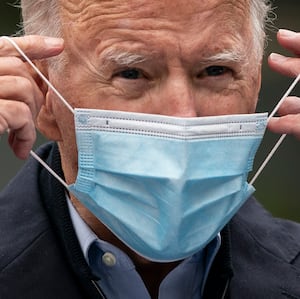Gun rights activists want us to believe the Second Amendment is sacrosanct, and that any form of gun control infringes on a constitutional right to keep and bear arms. Yet two former Supreme Court justices, both appointed by Republican presidents, Warren Burger (Nixon) and John Paul Stevens (Ford) have assailed this sanctity as bogus.
Retired Chief Justice Burger in 1991 called the gun lobby’s interpretation of the Second Amendment “one of the greatest pieces of fraud, I repeat the word fraud, on the American people by special interest groups that I have ever seen in my lifetime.”
Justice Stevens, one of four dissenting votes in the 2008 Heller decision that codified an individual right to firearms, was so disgusted with the outsized reverence for the Second Amendment that after the Parkland school shooting in 2018, he called for its repeal or the addition of a phrase to underscore what he believed was the Founders’ intent—“the right of the people to keep and bear arms when serving in the militia shall not be infringed.”
In 1791, the year the Second Amendment was ratified, a trained marksman could get off four shots in a minute. The 18-year-old shooters in Buffalo and Uvalde had AR-15s that could discharge hundreds of bullets, rendering their victims unrecognizable without DNA testing.
What is standing in the way of the common sense gun regulation that super-majorities of Americans want is not the Second Amendment, it’s politics. How we got to the Heller decision in 2008 expanding and lionizing gun rights “is a story about political mobilization on the Right in the 1980s. It was a multi-pronged effort by the NRA and its allies to weaken gun laws at the state level, and support academic and opinion pieces that extolled firearms for self-defense,” says Darrell Miller, co-director of the Duke Center for Firearms Law.
“It didn’t fall from the skies with the Heller decision. It was a long, 20-year runway of changing the conversation that culminated in Heller,” says Miller, citing the impact of an article published in the Yale Law Journal in 1989 by constitutional scholar Sanford Levinson, a noted liberal, that was titled, “The Embarrassing Second Amendment.” Levinson chided his fellow liberals for being quick to defend individual rights, like those of criminal defendants, while shunning the Second Amendment. The piece was heralded by conservatives, prominent columnist George Will among them.
Since Heller, a vision of the Second Amendment as an instrument to prevent most gun control has taken hold, “yet no court has ever said that, and no Founder said that. This aspirational vision is something gun rights activists have just made up” says Adam Winkler, author of Gunfight: The Battle over the Right to Bear Arms in America. “It’s their wish and they’ve been fighting to institutionalize it, and they’ve been successful.”
They’ve been so successful that in the 14 years since the Heller decision, Congress has not passed any gun regulation or reform. Elected officials cite Heller as reason not to act. “But they are wrong,” say the law clerks who worked for Justice Antonin Scalia, who wrote the opinion, and Justice Stevens, who dissented. “Heller does not totally disable government from passing laws that seek to prevent the kind of atrocities we saw in Uvalde, Texas. And we believe that politicians on both sides of the aisle have (intentionally or not) misconstrued Heller,” they wrote in a New York Times opinion column that faults politicians—and not the justices who ruled on Heller—for the impasse on gun safety.
Stephen Gutowski, founder of The Reload, writes about guns and gun policy. He told The Daily Beast, “One reason some on the left view Heller as creating an individual right is because there wasn’t a lot of Second Amendment case law before that point. Gun laws weren’t being struck down by federal courts for most of American history. The counter argument is there were no federal gun laws to strike down until the progressive era in the 20th century. The first federal gun law wasn’t passed until 1934 and it was legal to buy a machine gun through the mail and have it delivered to your house without any kind of federal background check up through the late 1960s.”
Not many people owned machine guns, so they were an easier thing to regulate. Modern sports rifles, like the AR-15, are so prevalent today with U.S. gun owners that gun rights activists argue that fact alone protects them under the Second Amendment—because they’re “in common use.” (Americans own about 18 million AR-15 rifles.)
How we got to this point where the gun lobby is willing to sacrifice children’s lives on the altar of gun rights is a long road that began in 1977 when the hard-right took over the NRA convention in Cincinnati. After that, the NRA shifted away from a sportsmen’s organization that had supported gun control measures in 1934—in response to gangland killings by bootleggers—and in 1968, when gun purchases were increasingly regulated based on a variety of factors, including mental illness, drug addiction, and age—purred by the assassinations Martin Luther King Jr. and Sen. Robert F. Kennedy.
In 1967, California Gov. Ronald Reagan, with the backing of the NRA, supported gun control to combat the Black Panther Party which was conducting armed patrols in some neighborhoods. Reagan was at the state house when the Black Panthers showed up brandishing their firearms, and later said he saw “no reason why on the street today a citizen should be carrying loaded weapons.” He signed into law a bill that prohibited public carrying of loaded firearms without a permit.
As president, Reagan signed the Firearms Protection Act in 1986, which banned new “fully automatic weapons” while loosening other restrictions at the behest of the NRA, its grip cemented that same year with the confirmation of Scalia to the Supreme Court.
In 1985, then-Attorney General Ed Meese served notice to the American Bar Association with a speech advocating “a jurisprudence of original intention.” This was part of the “Originalist Project” launched under Reagan that found its greatest champion in Scalia.
In the two centuries since the Second Amendment was ratified, no federal case had held there was an individual right to keep and bear arms—until the Heller decision. “Scalia said every time this has come up for the past 200 years, the Courts have gotten it wrong, and now they’ve gotten it right,” says Darrell Miller with Duke, paraphrasing the late justice’s rationale.
Interpreting what the Founders intended and how those intentions apply to modern life can change over time.
For example, attitudes toward interracial marriage and same sex marriage shifted over time and the courts interpreted the Constitution to accommodate modern life. Initiated by grassroots activism, this is a pattern accepted by most people as a reasonable evolution of the way the Constitution is read, and what the Founders intended.
Before 1985, a police officer could shoot a fleeing felon in the back and go unchallenged. It seems sometimes like that’s still the case, but Tennessee vs. Garner made it a violation of the Fourth Amendment to take down a fleeing felon with a firearm unless that person poses a danger to others.
Reva Siegel specializes in social movements and conflict, and a 60-page paper that she wrote in response to the Heller decision is a classic in the history of guns and politics and how they intersect with the Second Amendment.
She describes how Heller emerged from a bottom-up social movement and a top-down political party “in which Republican appointed justices helped to transform the way Americans understand the Second Amendment.” Scalia was the crown jewel in this movement, but Reagan-appointed judges paved the way.
“Before 2008—before Heller—Americans, even conservative icons like Robert Bork, understood the Second Amendment to cover guns connected to militia service. Judges like Scalia found in the Second Amendment a right of self-defense and began for the first time to find gun control laws unconstitutional,” she told The Daily Beast.
Whether Heller is the sword or the shield in today’s gun debate will be answered by the Supreme Court when it rules this month in a New York case that seeks to expand Heller from protecting the use of guns in the home for self-defense “to protecting the use of guns outside the home where they can threaten the rights and freedoms of many more Americans,” says Siegel.
No one can be accused anymore of neglecting the Second Amendment. It has taken over common sense and reached the breaking point where elected officials and American voters are going to have to decide how to balance this one right of access to firearms with a host of others, including the freedom to peacefully assemble in schools and churches and supermarkets—and now with the latest mass shooting in Tulsa, we can add hospitals to the list of unnecessarily unsafe public spaces.








